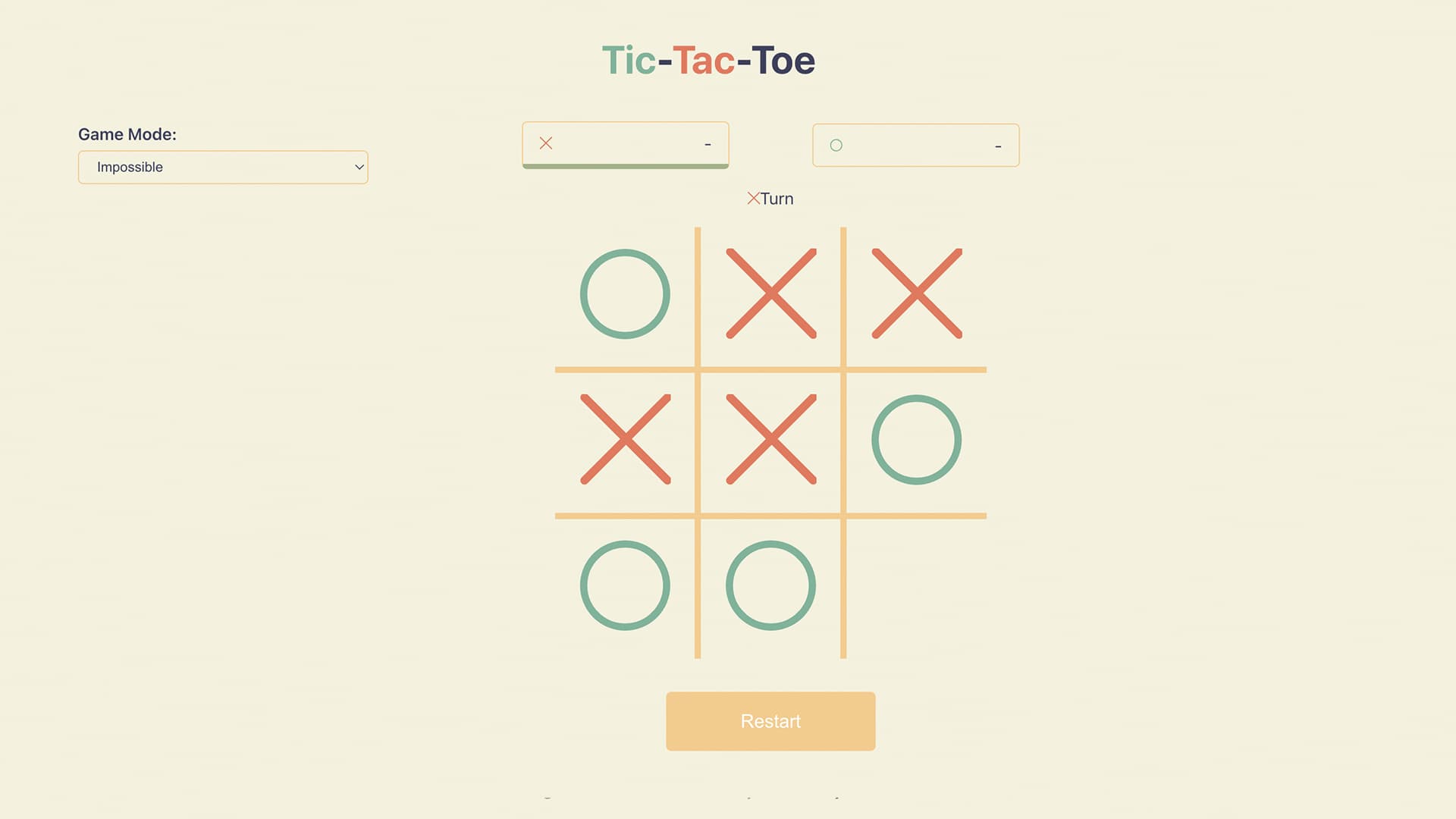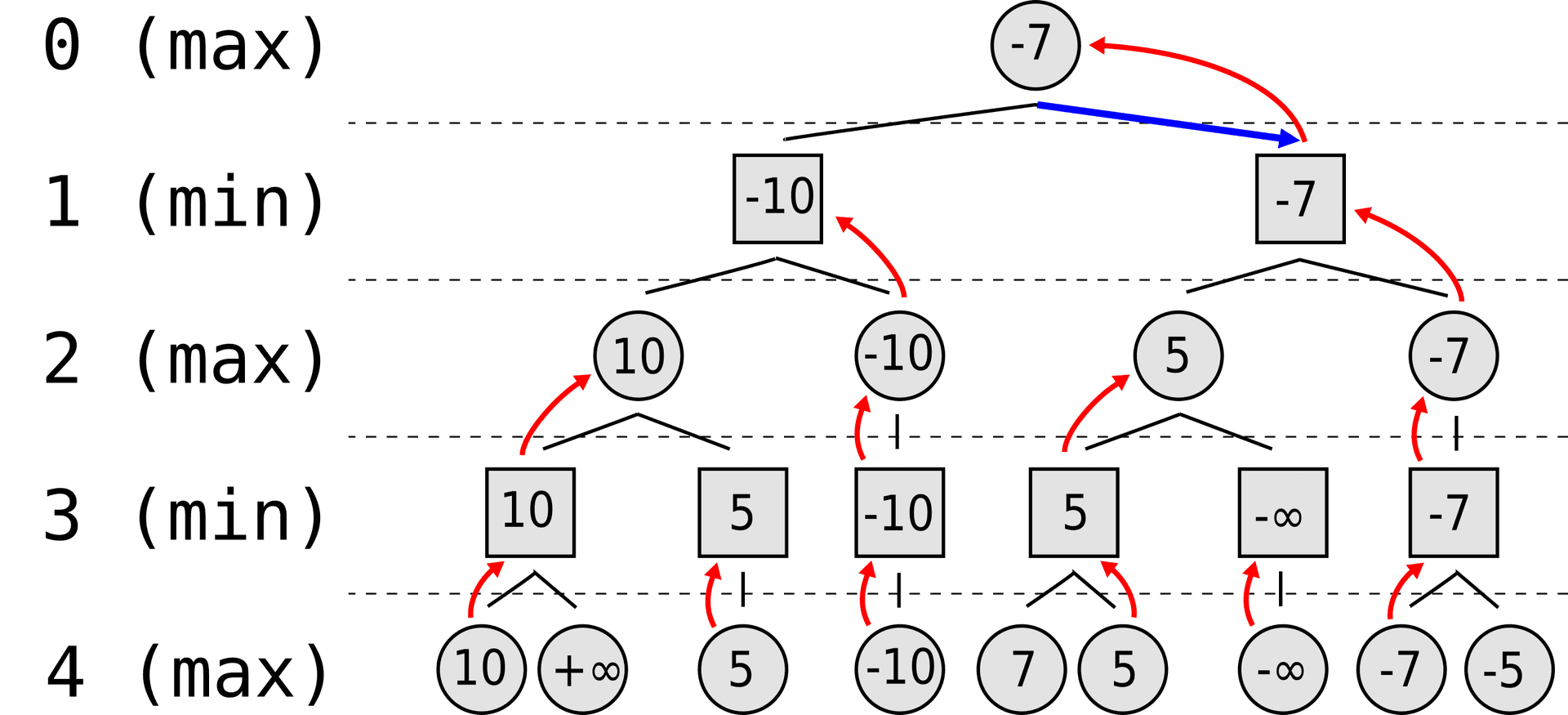Tic Tac Toe Ep 2: A.I. algorithm

This is a 3 parts serious we will cover from smooth UI/UX, undo step, different ways to build AI, from easy to unbeatable. Complete source code at GitHub, if it help you place a stars.
Introduction
Previous in part 1, we created a basic Tic tac toe interface and game. In part 2, we want to add A.I. feature to the game. We are going to develop 3 Level of A.I, from Easy -> Medium -> Unbeatable .
Final Product in Part 2

Easy Mode
Intuition
The easy mode random pick. We will start from finding empty cells from the game board. Just use a random to palce a mark in any empty cell.
Approach:
We will iterate through all the cell from the gameboard to find out all null cell. Then, we can random pick a cell and place the Mark to the gameboard.
import _ from "lodash"
function pickRandomEmptySpace(board: Cell[]) {
const emptyIndices = _.compact(
board.map((cell, index) => (cell === null ? index : null))
)
return _.sample(emptyIndices)
}function pickRandomEmptySpace will filter all empty cell, we can use sample to pick a random index from the list.
Medium & Unbeatable Mode
The core of the Medium and Impossible game modes is the Minimax algorithm. This is a recursive algorithm used in decision-making and game theory to determine the optimal move for a player, assuming the opponent also plays optimally.
Minimax Algorithm
- Functionality: At each step, the algorithm simulates all possible moves, evaluates the resulting board state, and selects the move that maximizes the AI's chances of winning.
- Optimizations: To enhance performance, the algorithm implements several optimizations, especially in the Impossible mode.
- Space Complexity in Impossible Mode: O(n!), which translates to 9! (362880) computations if the AI plays as "X". To address potential performance concerns:
- The AI's first move is pre-determined to the corner square, reducing complexity to 8! (40320) and improving response time.

function minimax(
board: Cell[],
depth: number,
isMaximizingPlayer: boolean,
aiPlayerMark: Marks,
limit: number | null
) {
const result = checkForWinner(board)
if (result !== null) {
return result === "TIE" ? 0 : result.winner === aiPlayerMark ? 10 : -10
}
// Depth limit condition
if (limit !== null && depth == limit) return 0
if (isMaximizingPlayer) {
let bestScore = -Infinity
for (let i = 0; i < board.length; i++) {
if (board[i] === null) {
board[i] = aiPlayerMark // AI's move
const score = minimax(board, depth + 1, false, aiPlayerMark, limit)
board[i] = null
bestScore = Math.max(score, bestScore)
}
}
return bestScore
} else {
let bestScore = Infinity
for (let i = 0; i < board.length; i++) {
if (board[i] === null) {
board[i] = aiPlayerMark === "X" ? "O" : "X" // Human's move
const score = minimax(board, depth + 1, true, aiPlayerMark, limit)
board[i] = null
bestScore = Math.min(score, bestScore)
}
}
return bestScore
}
}
function calcAIMove(board: Cell[], aiPlayerMark: Marks, limit: null | number) {
let bestScore = -Infinity
let move
for (let i = 0; i < board.length; i++) {
if (board[i] === null) {
board[i] = aiPlayerMark // AI's move
const score = minimax(board, 0, false, aiPlayerMark, limit)
board[i] = null // Reset it
if (score > bestScore) {
bestScore = score
move = i
}
}
}
return move
}Final Product

Project Files
For more information about how to use the plugin and the features it includes, GitHub Repository for Part 2.
Ready to Lesson 3
In Lesson 3, we are going to create a Tic tac toe A.I. from easy -> medium -> Unbeatable.
And we also will talk about the algorithm behine it.
Tic-Tac-Toe-Lesson 2